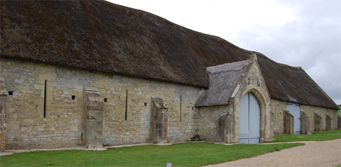Farms and Farming in the Landscape
 The AONB is an extremely rural area. Over 80% of the land is farmland and, historically, agriculture and forestry were the major employers in the AONB. Past changes in farming practice have fundamentally changed the structure and appearance of the AONB landscape.
The AONB is an extremely rural area. Over 80% of the land is farmland and, historically, agriculture and forestry were the major employers in the AONB. Past changes in farming practice have fundamentally changed the structure and appearance of the AONB landscape.
The first large scale cultivation of the AONB occurred in the Early Bronze Age around 2000 BC with the creation of a domesticated landscape by 1500 BC. The evidence for this, later prehistoric and Roman farming consists of extensive tracts of ancient field boundaries bounding nucleated farms and small settlements.
Remnants of Medieval farming preserved as fossilised strip fields provide evidence of the feudal system of open farming. Surviving common land and place name evidence marks the Medieval system of ancient common rights such as grazing, pannage and 'estover'. There is a medium survival of pre 1750 farmstead buildings, including the great monastic Medieval tithe barn at Tisbury.
Large historic farm complexes on the edge of settlements including historic barns, grain stores and outbuildings. Loose courtyard plans predominate, with regular courtyard plans dating from the 19th century being dominant on the higher downs.
Survival of historic patterns of farm holdings including valley farms which take a slice of river valley, valley slope and downland, and rounded farm holdings on the Chase plateau.
19th century model farms associated with great estates, including single large examples as at Longleat, and multiple model groups of farm buildings as on the Cranborne Chase. Expansion of barns and farms from the 19th century onwards into downland areas.
Surviving evidence of the 'sheep corn'system of agriculture in the form of relic water meadows and a small number of late 18th or early 19th century outfarms surviving on the downs
A major switch from livestock to arable farming in the last 150 years associated with massive and sweeping changes in land use in downland areas.
Modern picture of extensive arable holdings on former downland areas interspersed with remnant grasslands still used as grazing. This contrasts markedly with the pastoral landscapes of the chalk valley systems and the clay vale.
More information on the historic farms of the AONB can be accessed by clicking here: Theme 2: Farms and Farming.
This document forms part of the wider AONB Historic Environment Action Plans.
